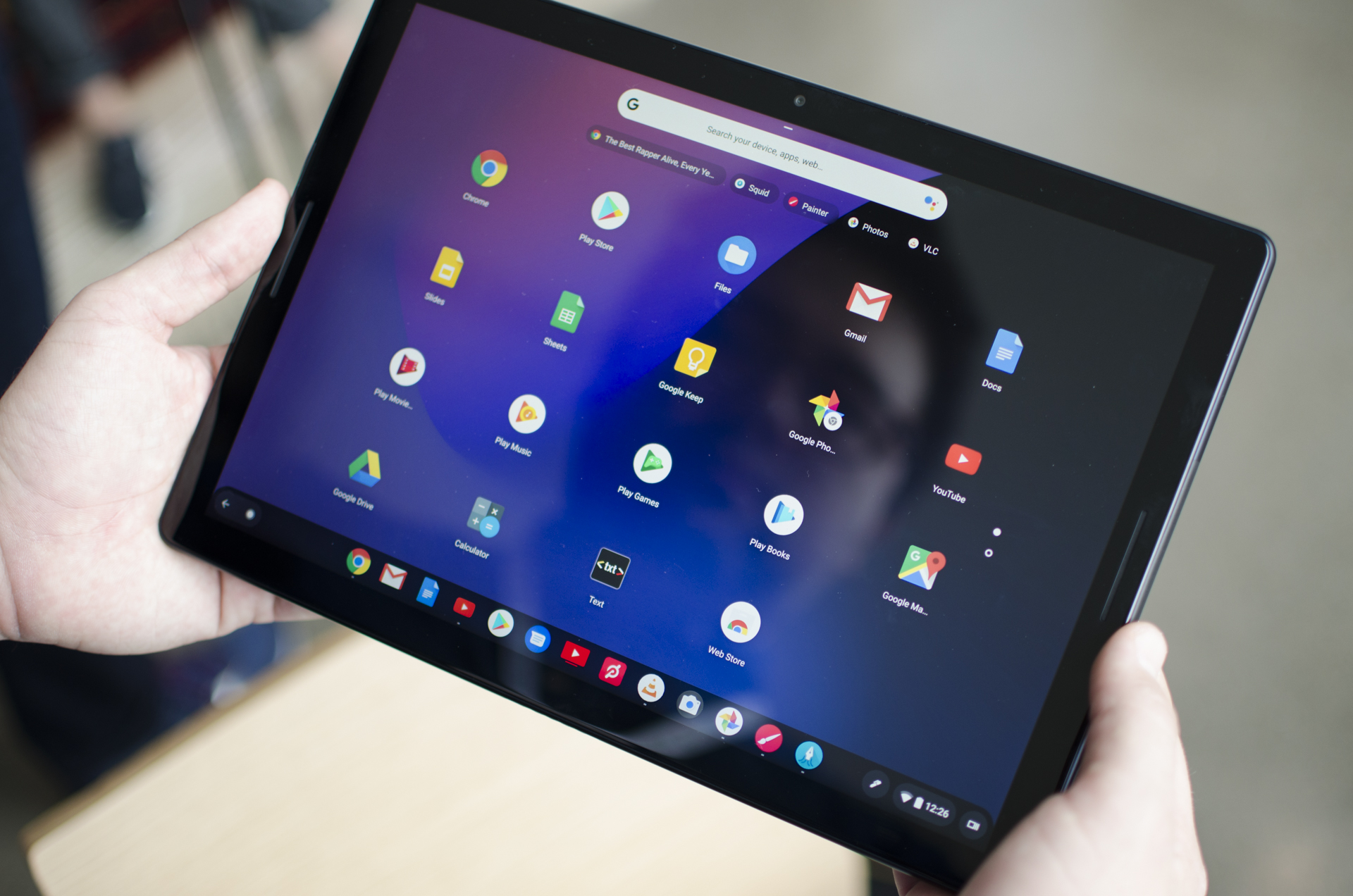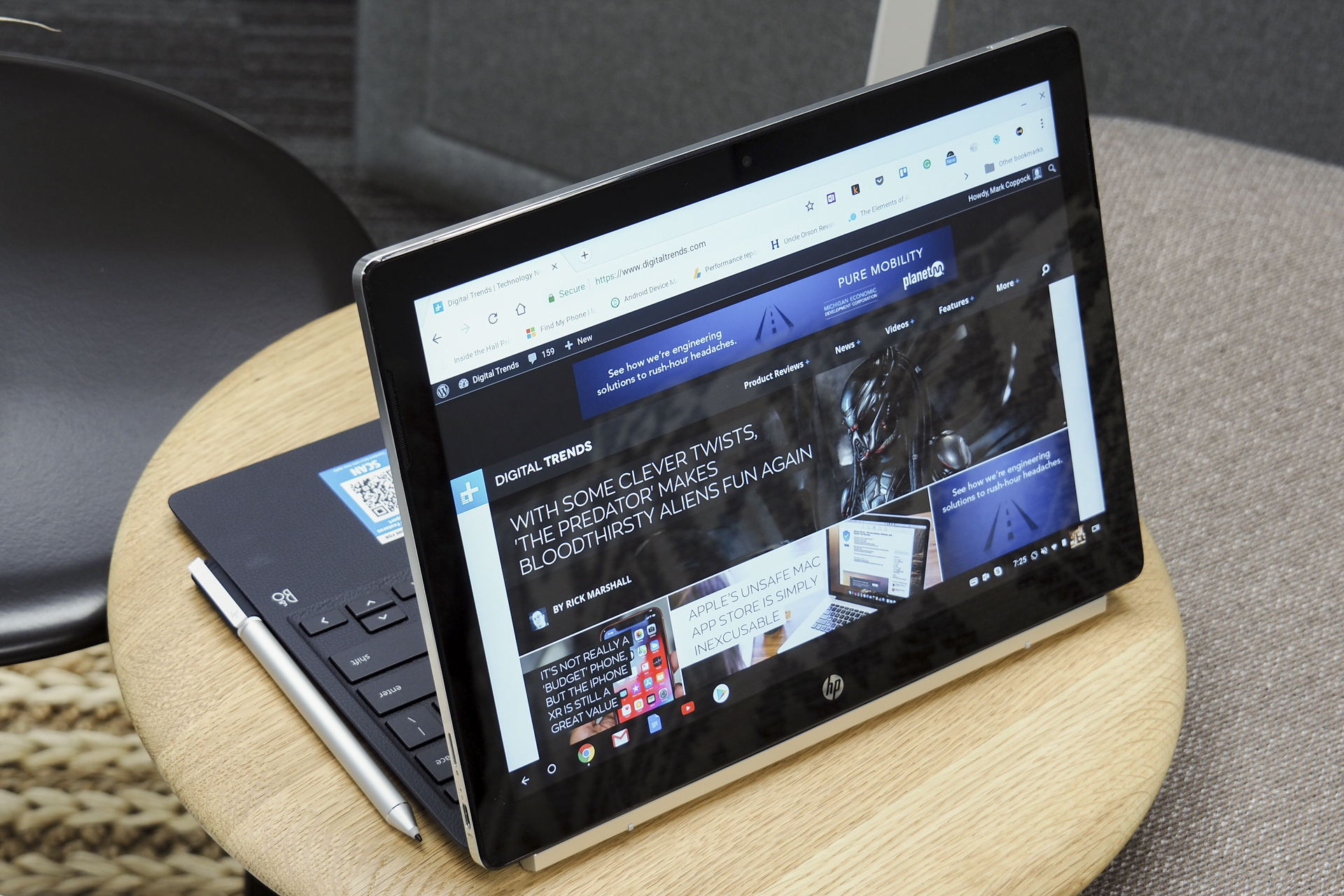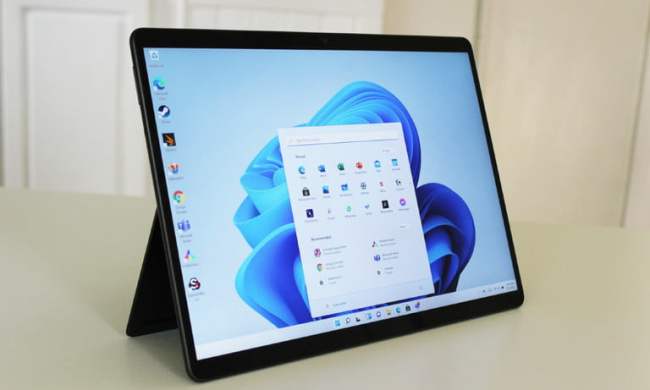Chromebooks are no longer budget systems meant for schools and organizations looking to save a buck and keep things simple. While Chrome OS continues to evolve and remains a less feature-complete (albeit more secure and easy to manage) platform, it’s increasingly running on premium hardware that offers excellent build quality, high-performance components, and great looks.
HP recently joined the fray with a detachable tablet 2-in-1, the Chromebook x2, that offers just as much premium quality without as much of a premium price. Google just announced the Pixel Slate, so we’ve compared it to the Chromebook x2 to see if it’s enough to keep Google on top of the Chrome OS heap.
Design

HP designed the Chromebook x2 to compete with the best detachable tablets, no matter the platform. It’s a solid slate, with an all-metal build that exudes the “solid chunk of metal and glass” feel that optimizes great gadgets today. The Chromebook x2 also enjoys a thoroughly functional design, with a tablet portion that magnetically snaps into a keyboard base to form a traditional clamshell notebook that feels entirely stable in a user’s lap.
Where the Chromebook x2 is a Surface Book-style 2-in-1 in terms of how it mates with its keyboard base, the Google Pixel Slate is much more like the Surface Pro. The tablet portion connects to a detachable keyboard cover that doesn’t provide quite the same stability on a lap. The all-aluminum Pixel Slate itself appears to be well made, though we’ll reserve final judgment until we’ve had a chance to review it.

Both of these 2-in-1s are tablets first, so they sport bezels that are a little larger than today’s trend, to make them comfortable to hold in tablet mode. We like the Chromebook x2’s more stable clamshell format and excellent keyboard mechanism, while the Pixel Slate might be less stable on a lap, and while its rounded keycaps are interesting, but we haven’t had a chance to try them out for extended typing sessions. The touchpads look similar, and both offer touch displays and active pens to support all of the modern input methods.
Connectivity is similar, with both the Chromebook x2 and the Pixel Slate offering dual USB-C ports. However, the Pixel Slate doesn’t include a 3.5mm audio jack, meaning you’ll be want a pair of Bluetooth headphones, while it does offer a fingerprint scanner for password-less login — something the Chromebook x2 lacks.
We like both devices, but the Chromebook x2 is better as a traditional notebook, and so it gets the nod.
Performance
The Chromebook x2 utilizes a low-powered 7th-generation Intel Core m3-7Y30 CPU, 4GB of RAM, and 32GB of eMMC storage to provide fast performance for Chrome OS. In our testing, the Chromebook x2 kept up with whatever tasks we asked of it, including a hearty mix of Chrome, Chrome OS apps, and Android apps.
The Pixel Slate offers a greater variety of configurations, starting with an Intel Celeron CPU, 4GB of RAM, and 32GB of eMMC storage, ramping up to an 8th-gen Intel Core i7 processor, 16GB of RAM, and 256GB of storage. That means that while it’s likely slower than the Chromebook x2 at its starting price of $599 (identical to the Chromebook x2), Google is offering configurations for significantly more money that will be much quicker.
Both the notebooks are built around 12.3-inch IPS displays, although the HP runs at 2,400 x 1,600 (235 PPI) resolution in the 3:2 productivity-friendly aspect ratio, while the Pixel Slate offers a higher 3,000 x 2,000 (293 PPI) resolution. We found the Chromebook x2’s display to be bright, to offer excellent contrast and colors, and to be a joy to use for both working and consuming media. Google is touting its “Molecular Display” (Low-Temperature PolySilicon, or LTPS) technology that’s supposed to offer a great experience while using less battery life, and we’ll be sure to report on its quality during our review.
The Chromebook x2 is more than fast enough for the typical Chrome OS uses, but the Pixel Slate will be faster in its higher configurations. That gives Google the win here.
Portability
The Chromebook x2 enjoys a significant 48 watt-hours of battery capacity, which is a good amount for a tablet. In our testing, we found battery life to be very good, with the device lasting for over four hours when running our aggressive Basemark web benchmark battery test. That usually means a notebook will endure a full working day for less strenuous productivity tasks. HP’s 2-in-1 also very thin and light when considering it tablet portion, which is 0.33 inches thick and weighs just 1.62 pounds. Note that it’s quite a bit heavier than some 2-in-1 combos at 3.07 pounds thanks to its keyboard base.
The Pixel Slate is thinner at 0.28 inches, and it weighs almost exactly as much as the Chromebook x2, at 1.6 pounds. That makes it very comfortable to hold in the hand when used as a tablet and with a pen. The keyboard is somewhat lighter than HP’s version, which means you’ll have less to carry around to be fully productive. Google’s tablet also packs in 48 watt-hours of battery capacity, an impressive feat given the tablet’s thin frame. Accordingly, it’s likely to enjoy similar battery life to the Chromebook x2 except for when it’s equipped with the highest-end components — although we’ll have to see if Google’s battery-saving claims about its display hold true.
Both of these tablet-first Chromebooks are thin, light, and (should) last long on a single charge, and so we’ll call this category a draw.
The cheaper HP Chromebook x2 has the edge
The Chromebook x2 has just one configuration, a Core m3 CPU, 4GB of RAM, and 32GB of storage, that costs $600 including the keyboard base and active pen. The Pixel Slate starts at $600 for a Celeron processor, 4GB of RAM, and 32GB of storage, and ramps all the way up to $1,500 for a Core i7, 16GB of RAM, and 256GB of storage.
However, the Pixel Slate Keyboard runs a whopping $200 and the pen is $100, meaning that you’ll be adding nearly $300 to the overall price if you want to be fully productive. That makes the Pixel Slate a much more expensive machine.
If you need the power of the Google Pixel Slate’s more expensive configurations and don’t mind spending the money, then it’s likely a great option. But we like the HP Chromebook x2 more for its excellent price/performance ratio, and for its greater comfort when using it as a traditional notebook.




